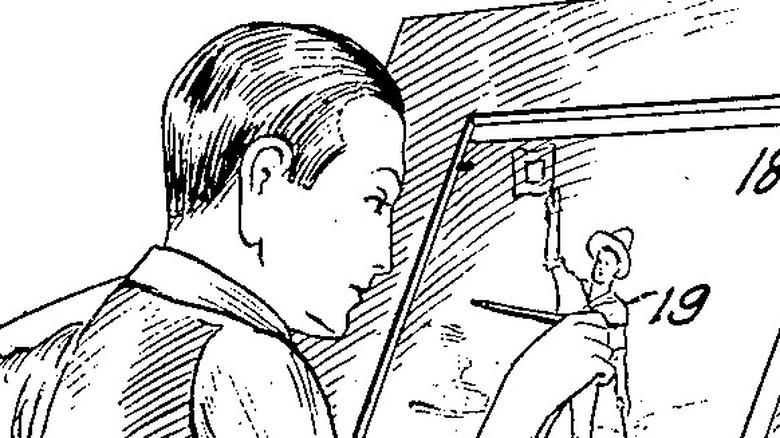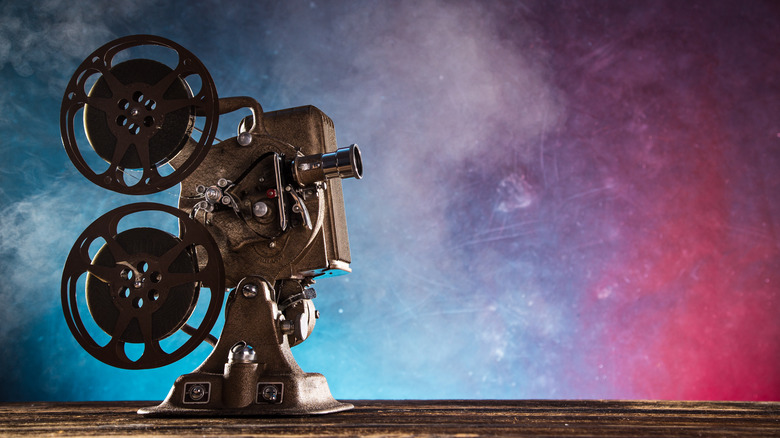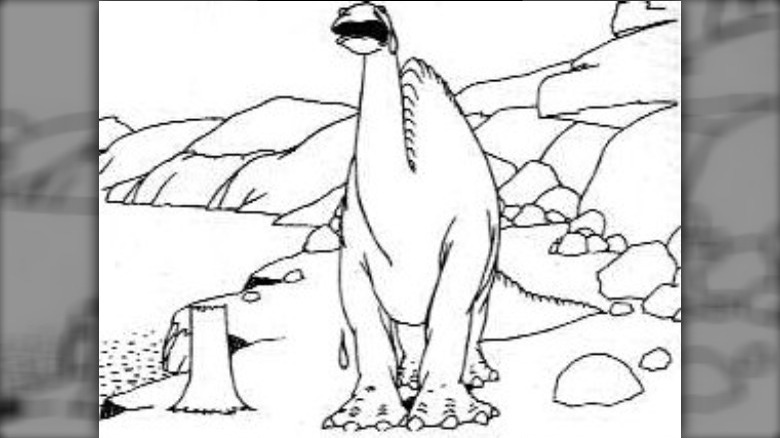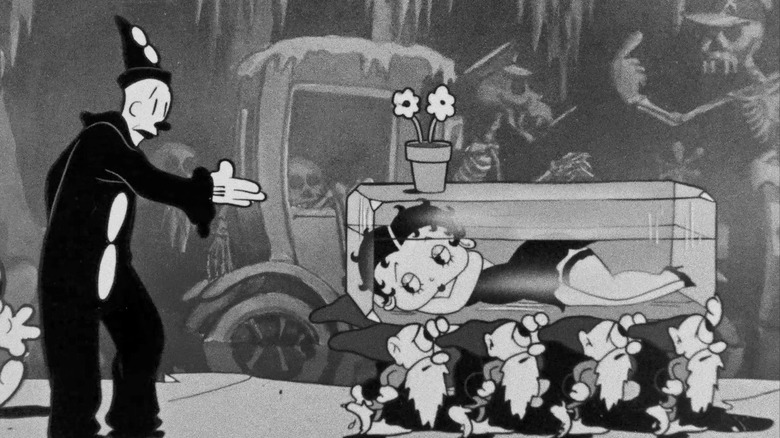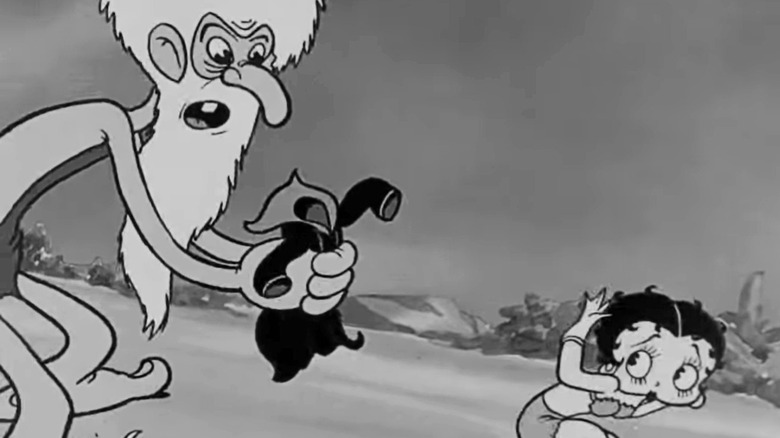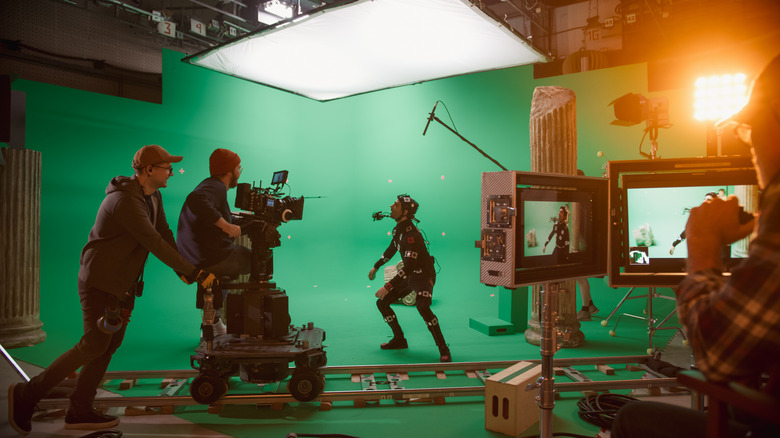The Breakthrough Technique That Changed Animation Forever
Humans had been drawing still pictures for centuries by the time animation came around and brought those drawings to life, effectively blowing everyone's mind the same way gramophones and short live-action films of trains coming straight at the camera did. The early years of animation consisted of films that were rudimentary, to say the least, but they were still progressing. One of the problems was that a lot of the motion in early animated films was clunky and a little rigid.
Max Fleischer and his brother David were responsible for some famous cartoon characters, most notably Betty Boop, and they produced popular cartoons in the 1920s and 1930s. However, years earlier Fleischer developed a technique that gave animators a way to create a smooth, lifelike movement for their characters. It was such a revolutionary breakthrough that the technique — which was invented in 1915 — is still heavily in use today (via Fleischer Studios).
The dawn of animated films
Animation existed in a much simpler form for many years before the first animated films were produced. Animation is simply the illusion of movement that comes from seeing a series of still images in quick succession. This effect was accomplished using various methods that created very simple motions (via MasterClass). These methods were sometimes only able to be seen by a few people at a time, but advancements in motion picture technology helped change that.
The first animation put on film was J. Stuart Blackton's "The Enchanted Drawing," which came out in 1900. (It's viewable on YouTube.) Despite the name, "The Enchanted" used stop-motion techniques and live actors. It was short, with a run-time of just two minutes, but it was quite the leap for animation on film because the industry gained momentum at a rapid rate. In 1908, Emile Cohl released what is often considered to be the first cartoon. According to Artlark, it was called "Fantasmagorie," and consisted of stick figure-style drawings (posted on YouTube).
Winsdor McCay pushed animation forward
Windsor McCay was a cartoonist who had a popular comic strip called "Little Nemo in Slumberland." According to Illustration History, the strip's main character, Nemo, would fall asleep and go on adventures in his dreams. With animated films starting to come into their own, McCay made a short animated film featuring some aspects of his comic strip mixed with live-action.
However, the animated film for which McCay is best known was an animation that was part of a unique vaudeville act (via Van Eaton Galleries). According to The New Yorker, his third film was called "Gertie The Dinosaur" and it was shown with McCay onstage interacting — or at least creating the illusion that he was interacting — with the eponymous dinosaur. The film itself was groundbreaking in the sense that it used both foreground and background sets of animations, something that went on to become commonplace in the animation industry and helped give the finished products a sense of depth. "Gertie The Dinosaur" also used other techniques that went on to become animation fundamentals, like keyframes, in-betweeners, and animation loops, per MasterClass.
The film was also influential in that Gertie The Dinosaur was arguably the first popular character born from animation and helped pave the way for other iconic characters like Mickey Mouse, Bugs Bunny, and Betty Boop, the latter of which was created by animator Max Fleischer.
Who were the Fleischer brothers?
Max and Dave Fleischer were two of the most influential animators. They created several iconic characters like Koko the Clown and Betty Boop, but also produced cartoons featuring already known characters like Popeye and Superman (via Fleischer Studios).
The Fleischers were known for a style that differed a great deal from the work being done by one of their most famous competition, Walt Disney. While Disney's fare was more friendly and good-natured in a lot of ways, the Fleischers tended to produce cartoons and characters with more of a gritty, surrealist sensibility, with dashes of sexual content, most notably in Betty Boop cartoons.
Max Fleischer was the technical wizard of the two and he was known to have come up with some innovations that became heavily used in the animation industry. One of these was called the rotograph (per Joel Brinkerhoff), which used a combination of miniature sets and forced-perspective to create depth and parallax in the brothers' animations. Max Fleischer must have loved the prefix "roto-" because it was also used in the name of what's usually remembered as his most famous innovation, rotoscoping.
What is rotoscoping?
In 1915, Max Fleischer devised a way of creating animations with fluid, lifelike movements. To accomplish this, Fleischer set up a contraption — called a rotoscope, per CG — which allowed him to project filmed footage through his drawing table which let him trace movement frame by frame. This produced an animation that was far smoother than the choppy animation of the day.
The first use of Fleischer's rotoscoping technique came in 1918 when his brother Dave donned a clown costume and danced around on a roof. His movements were traced and became the basis of the Fleischers' character Koko The Clown (via Laughing Squid).
Fleischer's most famous use of rotoscoping didn't come until the 1930s. There, the technique was used to great effect in a pair of Betty Boop cartoons, "Minnie The Moocher" (posted on YouTube) and "The Old Man of the Mountain" (likewise on YouTube). In both instances, they took footage of orchestra leader Cab Calloway — who was renown for his incredible dancing ability — and rotoscoped characters for the cartoon that also performed Calloway's songs. The result is an incredibly lifelike — though bordering on creepy and unsettling — smoothness.
How rotoscoping changed the animation game
Rotoscoping revolutionized animation and it's still heavily in use today. Walt Disney used rotoscoping while creating the first animated feature-length film, "Snow White," which was released in 1937. Disney had actors perform the scenes, which then gave animators a reference, especially for facial expressions (via CG).
Rotoscoping is also common in the special effects world and is the technique that allowed for films like "Mary Poppins" to feature live actors and animated characters together in the same scenes. According to the Nashville Film Institute, It's also how the special effects team on "Star Wars: Episode IV — A New Hope" gave the lightsabers their iconic, colorful glow.
Modern rotoscoping is typically done digitally using post-production and special effects software as opposed to Fleischer's analog method which he pioneered over 100 years ago, but the principles are the same. Today, motion capture technology is another element that has improved the realism of modern rotoscoping and has been an integral piece of bringing characters like Golem from "Lord of the Rings" and Caesar from "Planet of the Apes" to life.
